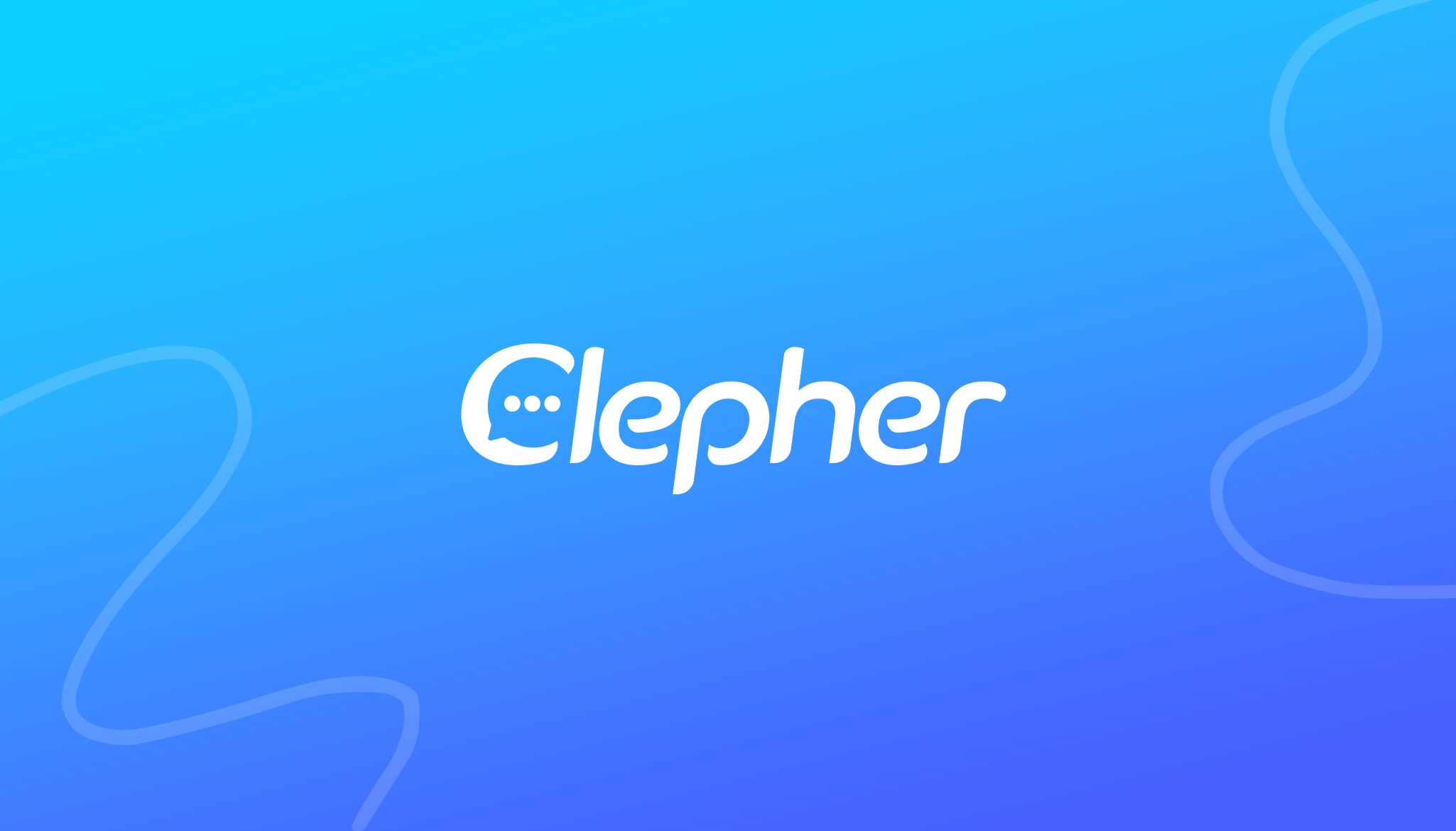Your customers expect instant answers and 24/7 support. Trying to meet these expectations with a human-only support team is expensive, slow, and often leads to burnout, which then creates inconsistent service. This is where modern chatbot technology transforms the game. When you deploy an AI agent powered by large language models, you automate and scale real conversations — not just scripted replies.
This isn’t something only massive corporations can use anymore. Today, an AI model can help e-commerce stores, SaaS platforms, and even local service providers convert more traffic into leads and paying customers. Instead of letting a high-intent visitor bounce from your website, a chatbot using advanced AI can engage them instantly, answer their questions, and guide them toward a purchase — right when they’re most ready to buy.
This article gets straight to the point. We’re breaking down the 10 0most impactful business benefits of AI chatbots — with real use-case examples and tactical tips you can apply immediately. You’ll see exactly how AI agents reduce support costs, generate qualified leads, and build a customer experience that drives repeat business and sustainable growth.
24/7 Availability and Instant Response
One of the most powerful advantages of AI chatbots is that they work 24/7/365. While your human support team is offline, the AI model continues answering questions instantly — whether it’s 2 PM or 2 AM. No waiting, delays, and missed opportunities.
For customers, this means help at the exact moment of need — not hours or days later.
For your business, it becomes a competitive advantage — because a potential insurance lead can get a quote at 11 PM … or a parent can check a baby product delivery ETA on a Sunday morning — without needing a live agent.
This is exactly how chatbot technology turns what used to be “impossible expectations” into profitable conversions.

24/7 availability and instant response
Actionable Implementation Tips
To get the most out of 24/7 support, you need to be strategic. The goal is a seamless experience that feels helpful, not robotic.
- Set Clear Expectations: Start the conversation by letting users know they’re talking to a bot. A simple “Hi, I’m the AI assistant for [Your Company]! How can I help you today?” manages expectations perfectly.
- Create a Smart Handoff: Program the chatbot to recognize when a question is too complex. It should save the chat history and create a support ticket, so the customer never has to repeat themselves when a human agent takes over.
- Analyze Off-Hours Chats: Review the conversations that happen overnight. This data is a goldmine, showing you what your customers need most and where you can improve your chatbot’s knowledge. You can automate your customer service even further based on these insights.
Cost Reduction and Increased Efficiency
One of the most compelling benefits of AI chatbots is their direct impact on your bottom line. By automating repetitive questions, AI-powered chatbots handle a massive volume of inquiries that would otherwise require a team of support agents. This lets you serve more customers without hiring more people, drastically reducing operational costs.
Think about it: when you use AI and modern AI technologies powered by deep learning, a chatbot can handle thousands of natural conversations about order status, return policies, or password resets all at once. This frees your human agents to focus on complex, high-value problems that actually require a human touch. For an e-commerce brand, this could mean saving thousands each month on support salaries. For a SaaS company, it means faster resolutions and a more efficient workflow.
Actionable Implementation Tips
To cut costs effectively, your approach must be smart. Don’t just replace humans—optimize your entire support process.
- Identify Your Top 5 FAQs: Before you build anything, identify the top five most frequent and simple questions your team answers. Automating these first will deliver the fastest ROI.
- Start Small, Then Scale: Deploy your AI-powered chatbot to handle just one or two of those high-volume tasks. Prove its value with a quick win, then expand its responsibilities over time.
- Upskill Your Human Team: As the chatbot handles the routine work, invest in training your human agents. Turn them into product experts, sales specialists, or customer success managers. This transforms your support department from a cost center into a growth engine.
Personalized Customer Experience
Beyond answering basic questions, the real power of AI chatbots lies in their ability to deliver personalized experiences. By connecting to your customer data, a chatbot can use a customer’s name, purchase history, and browsing behavior to make every interaction relevant and unique. This makes customers feel seen and understood — especially when ai technologies + deep learning models enable more human-like natural conversations.

personalized customer experience
This isn’t just a nice-to-have; it drives sales. An e-commerce chatbot can recommend products based on a customer’s past purchases. A travel bot can suggest destinations based on a user’s saved trips. This turns a simple support tool into a proactive sales assistant, creating a one-on-one marketing experience that scales to thousands.
Actionable Implementation Tips
Great personalization builds trust; bad personalization feels creepy. Here’s how to do it right.
- Use Data You Already Have: Start by personalizing with simple data points you’ve already collected, like a customer’s first name or their last order number. This adds immediate value without being invasive.
- Offer Tailored Recommendations: Program your bot to act like a helpful store clerk. If a customer is looking at hiking boots, the bot can ask, “Great choice! Looking for waterproof socks to go with those?”
- Segment Your Audience: Create different conversational paths for new visitors versus returning customers. A new user might get a welcome discount, while a loyal customer might get early access to a new product. Learning to implement hyper-personalization for your customers is key to mastering this.
Improved Lead Generation and Sales Conversion
Another of the key benefits of AI chatbots is their ability to turn your website into an active lead-generation machine. Instead of passively waiting for visitors to fill out a form, a chatbot can proactively engage them, qualify them as leads, and guide them down the sales funnel in real time. This captures high-intent prospects before they click away.
For your sales team, this shows no more cold leads. The chatbot acts as a digital SDR, asking qualifying questions like company size or budget. By the time a lead is handed off to a human, they are warmed up and ready to talk. For an e-commerce business, a chatbot can reduce cart abandonment by offering a discount or answering a last-minute question, directly boosting conversion rates.
Actionable Implementation Tips
To use a chatbot for sales, you need to think like a salesperson. Your bot’s conversation flow should guide users toward a specific goal.
- Ask Qualifying Questions: Instead of just saying “How can I help?”, have the bot ask questions that reveal a visitor’s intent, like “Are you looking for a solution for your team or for personal use?”
- Book Meetings Automatically: Integrate your chatbot with a calendar tool like Calendly. Once a lead is qualified, the bot can schedule a demo or sales call directly in the chat, eliminating friction.
- A/B Test Your Opening Lines: Test different greetings and questions to see what generates the most engagement. A simple change from “Hi there!” to “Looking for a quote?” can make a huge difference. Using a chatbot for lead generation effectively is all about continuous optimization.
Multilingual Support and Global Accessibility
One of the most transformative benefits of AI chatbots is their power to eliminate language barriers. By offering support in multiple languages, you can connect with customers around the world in their native tongue. This massively expands your market reach without the enormous cost of hiring a global, multilingual support team.

multilingual and global support
This means a customer in Spain can get the same instant, quality support as a customer in the United States. For an e-commerce brand, this opens up new international markets overnight. For a global SaaS company, it ensures a consistent user experience across every region, building a stronger, more inclusive brand identity.
Actionable Implementation Tips
Deploying a multilingual chatbot requires more than just Google Translate. Focus on quality and cultural context.
- Start with Your Top Markets: Analyze your website traffic to see which countries your visitors are coming from. Prioritize adding language support for your top two or three non-English speaking markets first.
- Localize, Don’t Just Translate: Work with a native speaker to review the chatbot’s scripts. Literal translations can sound robotic or even offensive. You need to adapt phrasing, tone, and cultural references to feel natural.
- Make Language Selection Easy: Use browser settings to automatically detect a user’s language, but always provide a clear, easy-to-find option for them to switch languages manually.
Reduced Human Error and Increased Consistency
A key operational benefit of AI chatbots is their ability to deliver perfectly accurate information, every single time. Humans get tired, have bad days, or forget details from their training. A chatbot doesn’t. When powered by artificial intelligence, machine learning, and conversational AI, it provides a standardized, pre-approved response, eliminating the risk of human error and ensuring every customer receives the same correct information.
This consistency is vital. In regulated industries like finance or healthcare, providing incorrect information can lead to serious compliance issues. A chatbot that uses natural language processing (NLP) can understand questions more clearly and respond with precise guidance. By using NLP models trained on compliant content, the bot ensures that details about interest rates, product specs, or company policies are communicated flawlessly — making it safer to use AI in environments where accuracy matters.
To ensure your chatbot is a source of truth, you need a strong quality control process.
- Create a Centralized Knowledge Base: Your chatbot’s accuracy depends on its data source. When your AI answers come from a unified knowledge base, both humans and bots stay aligned.
- Schedule Regular Audits: Review responses quarterly to prevent outdated information from surfacing — this is especially important for artificial intelligence systems that continuously learn.
- Use Customer Feedback to Find Errors: When users flag responses as unhelpful, treat this as a signal for the machine learning review queue. These flagged chats often reveal gaps in content or in the NLP model’s training data.
Data Collection and Actionable Business Intelligence
One of the most strategic benefits of AI chatbots is their role as a real-time data collection tool. Because conversational AI captures raw questions directly from the consumer’s language, you get authentic voice-of-customer input — not filtered survey guesses. And with machine learning applied to chat transcripts, patterns emerge automatically over time.
This data is a goldmine for business strategy. An e-commerce brand can spot trends in what products people are asking about and adjust inventory. A software company can identify common feature requests and use NLP tagging to prioritize roadmap items. Using AI this way gives leadership a richer context to make smarter, data-driven decisions.
Actionable Implementation Tips
- Tag conversations with machine-readable labels.
- Track “not found” questions — these signal knowledge gaps for the NLP model.
- Share monthly insights from conversational AI with sales, marketing, and product.
Seamless Integration with Existing Systems
A modern AI chatbot doesn’t work in isolation — conversational AI becomes far more valuable when integrated with CRMs, ecommerce systems, or ticketing platforms. For example, a chatbot using machine learning can automatically recognize intents and push structured data into Salesforce, Shopify, or Zendesk.
This is how AI turns a simple support widget into a workflow engine — not just a Q&A tool.
Actionable Implementation Tips
Smart integration is key. Focus on connections that deliver the most immediate value.
- Start with Your CRM: Your Customer Relationship Management (CRM) system is the heart of your customer data. Integrating your chatbot here first allows for deep personalization and automated lead capture.
- Connect to Your Helpdesk: Syncing your chatbot with your helpdesk software (like Zendesk or Intercom) ensures that all conversation history is saved in one place, giving your human agents full context.
- Use Webhooks for Custom Actions: For more advanced workflows, use webhooks to trigger actions in other apps. For example, a webhook could add a new lead from a chatbot conversation directly to your email marketing list. Seamlessly integrating digital marketing tools is essential for a unified view of the customer journey.
Enhanced Customer Satisfaction and Engagement
Ultimately, one of the most important benefits of AI chatbots is their ability to make customers happier. By providing instant, 24/7, and personalized help, chatbots remove friction from the customer journey. They solve problems quickly and efficiently, creating positive experiences that build loyalty and trust.
A happy customer is an engaged customer. When a chatbot makes it easy to find information or place an order, customers are more likely to return. For example, a pizza ordering bot can make getting dinner fun and interactive. A retail bot that helps a customer find the perfect gift turns a potentially stressful task into a delightful experience. These positive interactions directly lead to higher customer satisfaction scores (CSAT) and increased lifetime value (CLV).
Actionable Implementation Tips
To boost satisfaction, your chatbot needs a personality. It should feel helpful, not just automated.
- Inject Your Brand’s Voice: Define a personality for your chatbot. Is it helpful and professional, or fun and witty? This voice should align with your overall brand identity and make interactions more memorable.
- Use Quick Replies and Buttons: Don’t make users type everything out. Use buttons and quick replies to guide the conversation and make it easy for them to get what they need with a single click.
- Ask for Feedback: At the end of a conversation, have the bot ask a simple question like, “Did I answer your question today?” with a thumbs-up/thumbs-down option. This gives you direct feedback to continuously improve its performance.
Scalability and Handling High-Volume Inquiries
A final, critical benefit of AI chatbots is their incredible scalability. Your human team can only handle so many conversations at once. A chatbot, on the other hand, can manage thousands of simultaneous conversations without breaking a sweat. This allows your business to handle sudden spikes in traffic—like during a flash sale or a product launch—without a decline in service quality.
This ability to scale is a business lifesaver. An e-commerce store can use a chatbot to manage the massive influx of questions on Black Friday. An airline can handle thousands of flight status inquiries during a weather event. The chatbot ensures that every single customer gets an instant response, protecting your brand’s reputation and preventing lost revenue during your busiest moments.
Actionable Implementation Tips
To scale successfully, you need to be prepared. Ensure your chatbot’s infrastructure can handle the pressure.
- Choose a Cloud-Based Platform: Use a chatbot platform built on scalable cloud infrastructure (like AWS or Google Cloud). This ensures you have the resources to handle traffic spikes automatically.
- Load Test Before Big Events: Before a major marketing campaign or holiday season, run load tests to simulate high traffic. This helps you identify and fix any potential bottlenecks before they impact real customers.
- Create a Smart Triage System: During a surge, program your bot to handle all common questions first. For issues that need a human, have the bot create a ticket and inform the customer of the expected wait time, which manages expectations and reduces frustration.
Top 10 NLP Chatbot Benefits Comparison
| Item | Implementation Complexity 🔄 | Resource Requirements ⚡ | Expected Outcomes 📊⭐ | Ideal Use Cases 💡 |
|---|---|---|---|---|
| 24/7 Availability and Instant Response | Medium 🔄🔄 — chatbot setup, routing & handoff | Low–Medium ⚡ — hosting + maintenance | Immediate responses, higher satisfaction, fewer waits 📊⭐⭐⭐ | After-hours support, order/status, global customers |
| Cost Reduction and Increased Efficiency | Medium 🔄🔄 — automation design & integration | Medium ⚡⚡ — initial dev, lower ongoing labor | Lower OPEX, faster resolution, reallocated staff 📊⭐⭐⭐ | High-volume repetitive tasks, support centers |
| Personalized Customer Experience | High 🔄🔄🔄 — ML models, data integration | High ⚡⚡⚡ — data, CRM, model training | Higher engagement, conversion, retention 📊⭐⭐⭐⭐ | Recommendations, loyalty programs, upsell |
| Improved Lead Generation and Sales Conversion | Medium–High 🔄🔄🔄 — scoring, payments, flows | Medium ⚡⚡ — integration with sales tools | More qualified leads, higher conversion rates 📊⭐⭐⭐ | B2B qualification, e‑commerce funnels, demos |
| Multilingual Support and Global Accessibility | Medium 🔄🔄 — translation + localization | Medium–High ⚡⚡⚡ — language models, validation | Market expansion, removed language barriers 📊⭐⭐⭐ | International markets, travel & hospitality |
| Reduced HumanError and Increased Consistency | Medium 🔄🔄 — KB, validation & audits | Low–Medium ⚡⚡ — templates, monitoring tools | Consistent, accurate responses; better compliance 📊⭐⭐⭐ | Regulated industries, billing, FAQs |
| Data Collection and Actionable Business Intelligence | High 🔄🔄🔄 — analytics, NLP, BI pipelines | High ⚡⚡⚡ — storage, analytics platforms | Deep insights, trend spotting, product improvements 📊⭐⭐⭐⭐ | Product teams, CX optimization, market research |
| Seamless Integration with Existing Systems | Medium–High 🔄🔄🔄 — APIs, webhooks, sync logic | Medium ⚡⚡ — connector development, testing | Unified customer data, faster rollout, minimal disruption 📊⭐⭐⭐ | CRM/e‑commerce vendors, legacy systems |
| Enhanced Customer Satisfaction and Engagement | Medium 🔄🔄 — conversational design & testing | Medium ⚡⚡ — content, monitoring, updates | Higher NPS, increased CLV, stronger brand perception 📊⭐⭐⭐ | Retail, food & beverage, proactive outreach |
| Scalability and Handling High-Volume Inquiries | High 🔄🔄🔄 — infra, load balancing, QA | High ⚡⚡⚡ — cloud, autoscaling, observability | Handle spikes, maintain quality, cost‑effective growth 📊⭐⭐⭐⭐ | Seasonal peaks (Black Friday), large user bases |
Start Your AI Chatbot Transformation Today
The benefits of AI chatbots are clear. They are no longer just simple reply bots; they are strategic assets that drive growth, cut costs, and build better customer relationships. All ten benefits work together, creating a powerful positive impact across your entire business.
From providing 24/7 support to personalizing every interaction, AI is reshaping what’s possible. You’ve seen how chatbots reduce costs, eliminate errors, understand human language, and scale to meet any demand. Most importantly, they turn every customer query into a source of valuable data, giving you the insights needed to constantly improve.
From Understanding to Implementation
The true value comes from taking action. The good news? You don’t need a huge budget or a team of developers to start. The first step is to identify your biggest conversational bottleneck.
Are you answering the same 10 questions all day? Automate them with an NLP chatbot (an NLP bot) to interpret user intent accurately and free up your team for more important work.
Do your leads slip through the cracks on your website? Use a chatbot to engage them immediately, analyze user intent in real-time, qualify them, and book a sales call.
Is your customer onboarding process confusing? Build a chatbot that understands human language and guides new users through the first steps, boosting adoption and retention.
Choosing one high-impact area to start creates a quick win — and builds momentum for your entire AI strategy.
For businesses that want an expert partner, exploring specialized AI chatbot services can provide a clear roadmap to designing and launching a solution tailored to your specific goals.
Conclusion: Natural Language Processing and Chatbots Usage!
Ultimately, AI chatbots are about building a more efficient, responsive, and customer-focused business. The benefits are not some far-off future concept—they are tangible results you can achieve right now. By embracing this technology, you position your brand as a modern leader that truly values its customers’ time and experience. Don’t wait for your competitors to set the new standard. The time to start your AI transformation is today.
Ready to turn these benefits into reality? Clepher provides an intuitive, no-code platform that lets you build and deploy powerful AI chatbots on your website, Messenger, and Instagram in minutes. Start your journey by visiting Clepher and discover how easy it is to automate your success.
Related Posts



